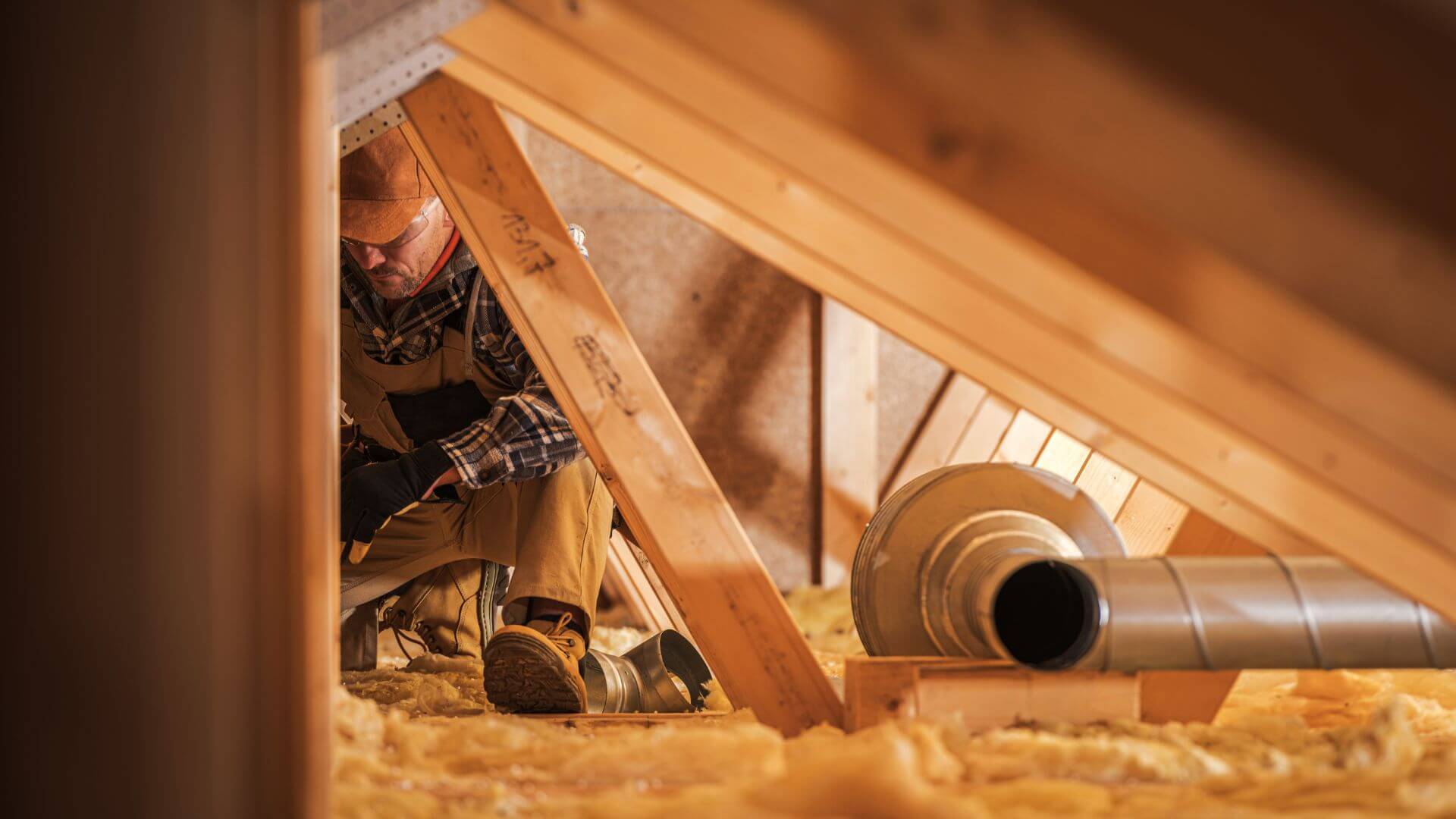
The Real Dangers of Rodents in Attics: What Homeowners Need to Know
If you’ve been hearing strange noises coming from your attic at night, chances are you’re not imagining things. Unwelcome guests like rats and mice often find attics to be the perfect hiding and nesting places. But the issue goes far beyond nuisance—rodents in attics can cause significant damage and pose serious health risks to your household.
This article explores the real dangers of rodents in attics, how to detect a problem early, and what steps you can take to eliminate them for good.
Why Rodents Love Attics
Attics offer the ideal environment for rodents—warm, dark, and rarely disturbed. Whether it’s mice in the attic or rats nesting in insulation, these critters quickly take advantage of the space to breed, hide from predators, and scavenge for food.
Many homes have small gaps in the roofline, broken vent screens, or improperly sealed openings—making it easy for rodents to sneak in. Once inside, they can establish a colony before you even notice there’s a problem.
Signs of Rodents in the Attic
One of the first steps in addressing an attic rodent infestation is recognizing the warning signs. Rodents are elusive, but they often leave behind clear evidence of their presence.
Here are some of the most common signs of rodents in the attic:
- Scratching or scampering sounds, especially at night
- Droppings scattered around insulation or near entry points
- Chewed wires, wood, or ductwork
- Urine stains and foul odors
- Disturbed or matted insulation
- Greasy rub marks along beams or pipes
If you notice one or more of these signs, chances are your attic is already housing a rodent family.
The Health Risks of Attic Rodents
While structural damage is a major concern, the health risks of attic rodents are equally alarming. Rodents carry a wide range of diseases that can be transmitted to humans either through direct contact or airborne contaminants.
Rodent droppings in the attic often contain dangerous pathogens like hantavirus, leptospirosis, and salmonella. As these droppings dry out, particles become airborne and can be inhaled by unsuspecting residents. The same goes for rodent urine in the attic, which not only smells terrible but also contributes to poor indoor air quality and respiratory irritation.
Rodents also bring in fleas, mites, and ticks, introducing another layer of health risks. For families with young children, pets, or immune-compromised members, these hazards should not be ignored.
Rodent Damage in the Attic: A Costly Problem
Rodents are notorious chewers. Their front teeth never stop growing, so they gnaw on materials constantly to keep them trimmed. Unfortunately, your home is often the target of this destructive behavior.
Rodent damage in the attic can include:
- Chewed electrical wires, leading to fire hazards
- Torn or compressed insulation, reducing energy efficiency
- Damaged HVAC ducts and vents
- Structural damage to wood beams and framing
- Contamination of storage boxes, clothing, and keepsakes
The cost of repairing these issues can quickly escalate. In many cases, attic rodent cleanup involves replacing insulation, rewiring electrical systems, and conducting full decontamination procedures.
Mice vs. Rats: Understanding the Differences
Both mice in the attic and rats in attic spaces are problematic, but their behavior and damage patterns can differ.
Mice tend to be smaller and more curious, often exploring new spaces and squeezing through gaps as small as a dime. Rats are larger, stronger, and can cause more extensive physical damage in a shorter time. They also reproduce rapidly—making even a small infestation a ticking time bomb.
Understanding which rodent you’re dealing with is crucial to developing an effective attic pest control strategy.
Rodent Nesting in Attic Insulation
Insulation is one of the first materials to suffer in a rodent invasion. Rodents burrow into insulation to create nests and keep warm, often tearing it apart in the process. Rodent nesting in attic insulation not only compromises your home’s energy efficiency but also contaminates the material with droppings and urine.
Over time, this contamination can spread bacteria and foul odors through your HVAC system and into your living spaces. A thorough attic rodent cleanup and insulation replacement are often necessary after an infestation is resolved.
How to Get Rid of Rodents in the Attic
Many homeowners wonder how to get rid of rodents in the attic without causing further harm or risking exposure to disease. While DIY traps and repellents might offer temporary relief, they don’t solve the root problem.
The most effective approach combines immediate removal with long-term prevention. Here’s what a complete solution looks like:
- Inspection: Identify all entry points and nesting areas.
- Removal: Use traps or exclusion devices to eliminate current rodents.
- Cleanup: Safely remove droppings, urine, and nesting materials.
- Decontamination: Sanitize the attic to prevent disease and odor.
- Exclusion: Seal all entry points to rodent-proof the attic.
This process requires specialized equipment, safety gear, and rodent behavior expertise—making professional attic rodent removal the safest and most reliable option.
Why DIY Isn’t Enough: The Case for Professional Rodent Removal
While there are plenty of DIY products available online, very few offer lasting results. Rodents are intelligent and adaptable. They can chew through foam, push aside steel wool, and create new entry points in vulnerable areas of your roofline.
Attempting attic rodent removal without proper tools or knowledge can also put your health at risk, especially when dealing with hazardous waste. That’s why professional intervention is strongly recommended.
At Rodent Control Inc., our team specializes in rodent control in attics, combining advanced inspection tools, humane removal techniques, and industrial-grade sealing materials to ensure your attic stays rodent-free.
Preventing Future Infestations: Rodent Proofing Your Attic
Once the rodents are gone, it’s time to prevent them from coming back. Rodent-proofing your attic is a critical final step that too many homeowners overlook.
A well-executed rodent exclusion strategy may involve:
- Sealing vents with rodent-proof mesh
- Repairing roof gaps and eaves
- Installing chimney caps and door sweeps
- Trimming nearby tree branches that offer roof access
- Maintaining cleanliness and reducing food sources
Even a small oversight can give rodents the opportunity to re-enter your attic and undo all your hard work. Letting professionals handle the rodent barrier installation ensures every access point is properly secured.
Conclusion: Protect Your Home from the Hidden Dangers Above
The dangers of rodents in the attic go far beyond the noise and mess. From disease transmission and fire hazards to insulation destruction and structural damage, the risks are too significant to ignore. While spotting the signs of rodents in the attic early can help, true protection comes from addressing both the infestation and its root causes.
Don’t wait until your attic becomes a rodent hotel or your energy bills skyrocket. Take control now with expert help.
Rodent Control Inc. offers comprehensive, humane, and effective attic rodent removal services designed to not only eliminate current pests but also prevent future invasions. With years of experience serving California homeowners, we understand the unique challenges local properties face—and we know exactly how to keep your attic safe and clean.
Contact Rodent Control Inc. today to schedule your free inspection and reclaim your attic from rodents—once and for all.
